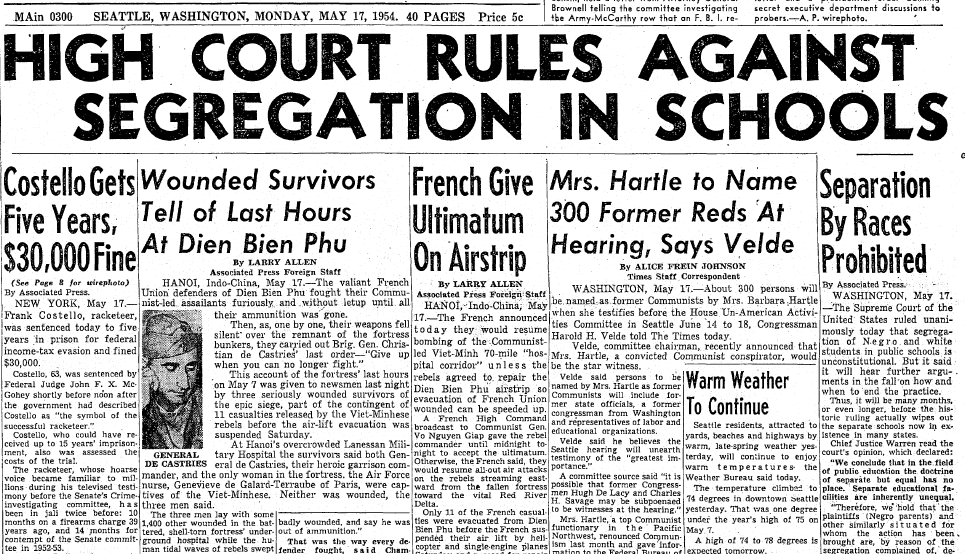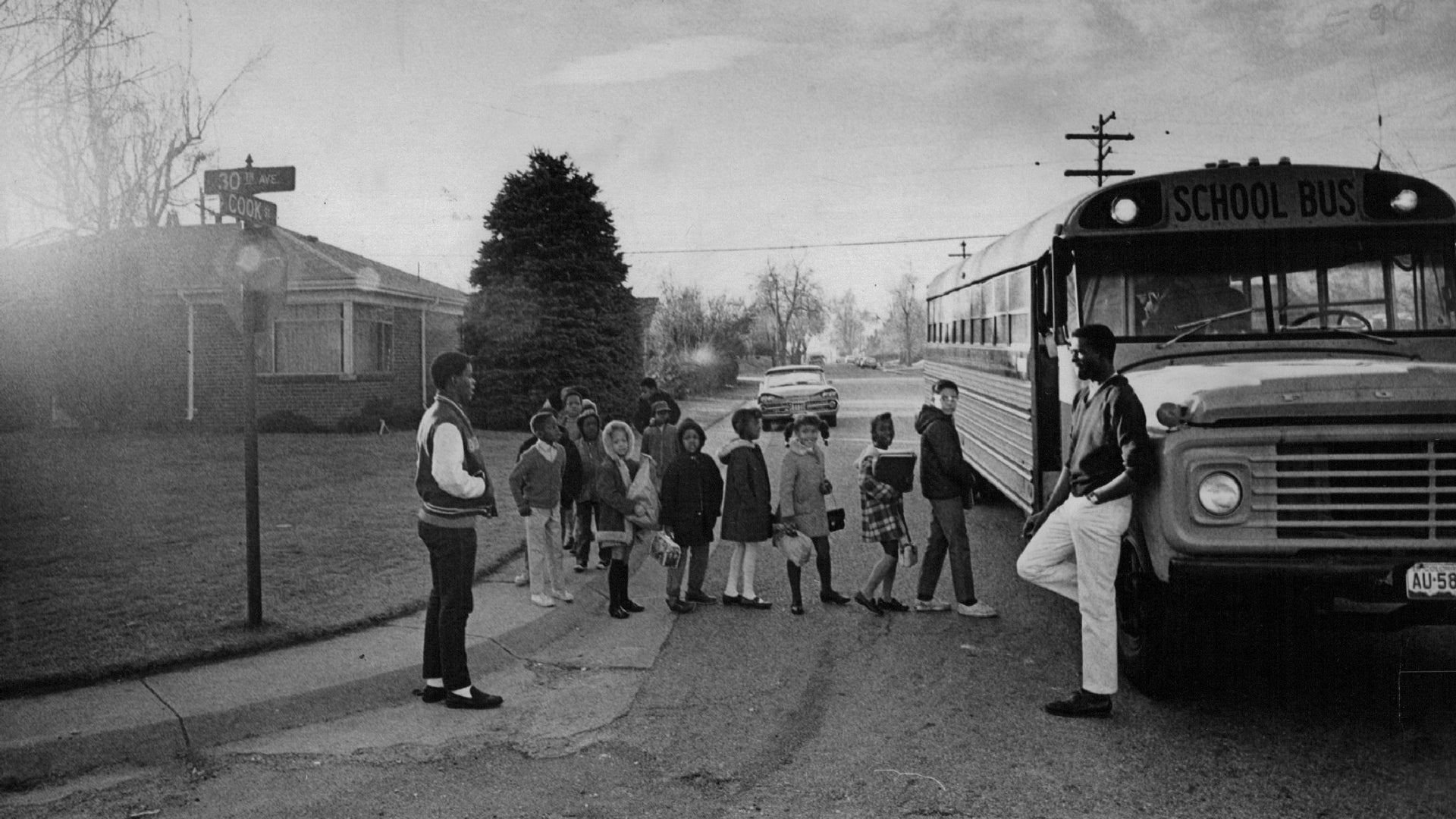School Desegregation Order Ended: A New Era For Schools?

Table of Contents
The History of School Desegregation in Little Rock School District:
Little Rock's history with school desegregation is deeply intertwined with the national struggle for civil rights. The district's schools were heavily segregated before the Brown v. Board of Education ruling in 1954. The ensuing years witnessed significant resistance to integration, culminating in the iconic Little Rock Nine incident of 1957, where nine African American students bravely integrated Central High School amidst intense opposition.
- Timeline of Key Events:
- 1954: Brown v. Board of Education declares state-sponsored segregation in public schools unconstitutional.
- 1957: The Little Rock Nine attempt to integrate Central High School, facing violent resistance.
- 1970s-1980s: Court-ordered busing and other integration efforts are implemented, leading to increased racial diversity in some schools.
- Late 1900s - 2023: Gradual shift towards less overt segregation, but persistent racial disparities in school resources and achievement remain. Continued court supervision aimed at maintaining integration.
- 2023: The court-ordered desegregation plan for the Little Rock School District is officially ended.
Despite efforts toward integration, the Little Rock School District, like many others, continued to grapple with challenges:
- Uneven distribution of resources: Some schools predominantly serving minority students often lacked the funding and resources of those serving primarily white students.
- Achievement gaps: Significant disparities in academic performance persisted between different racial groups.
- Persistent segregation: While legally mandated segregation ended, de facto segregation, driven by housing patterns and other factors, continued to influence school demographics.
The Implications of the Ended Order:
The ending of the desegregation order raises significant concerns about the potential for re-segregation in the Little Rock School District. Without court oversight, the risk of schools returning to a more racially homogenous state is substantial. This could lead to:
- Increased Racial Imbalance: Schools may become more segregated based on racial demographics, potentially exacerbating existing inequalities.
- Negative Impact on Student Achievement: Studies show that racially diverse schools can benefit all students, fostering tolerance and preparing them for a diverse world. Re-segregation risks widening achievement gaps.
- Exacerbated School Funding Disparities: The potential for uneven resource allocation could intensify, leading to inequitable opportunities for students in different schools.
- Erosion of Social Cohesion: Increased segregation could negatively affect community relations and overall social cohesion within the district.
Moving Forward: Strategies for Maintaining Integration and Equity:
To prevent re-segregation and ensure equitable educational opportunities for all students, proactive strategies are crucial. These include:
- Promoting Diversity and Inclusion: Schools need to actively cultivate inclusive environments that celebrate diversity and address issues of racism and bias.
- Equitable Resource Allocation: Funding mechanisms should be reviewed to guarantee equitable distribution of resources across all schools, regardless of demographics.
- Targeted Support Programs: Programs addressing learning gaps and providing targeted support for students from disadvantaged backgrounds are essential.
- Community Engagement: Strong collaboration between school administrators, teachers, parents, and community leaders is crucial for maintaining integration and fostering a sense of shared responsibility.
- Policy Recommendations: Implementing policies that promote diversity in school assignments, magnet programs, and open enrollment options can help mitigate segregation.
Successful examples of integrated and equitable school systems can serve as models. These often prioritize proactive measures, robust community engagement, and equitable resource allocation.
Conclusion:
The ending of this school desegregation order marks a significant turning point. The history of school desegregation in Little Rock, marked by both progress and setbacks, underscores the ongoing need for vigilance and proactive strategies to ensure equitable educational opportunities. To ensure a future of equitable education for all, continued vigilance and advocacy for school desegregation and equitable resource allocation are crucial. Stay informed and actively participate in shaping a future where every child has the opportunity to succeed. The fight for school desegregation, and for equitable education for all children, continues.

Featured Posts
-
 Freedom Flotilla Coalition Reports Drone Attack Near Maltese Territorial Waters
May 03, 2025
Freedom Flotilla Coalition Reports Drone Attack Near Maltese Territorial Waters
May 03, 2025 -
 Aid Ship Sos Drone Attack Near Malta Gaza Bound Vessel In Distress
May 03, 2025
Aid Ship Sos Drone Attack Near Malta Gaza Bound Vessel In Distress
May 03, 2025 -
 Lotto Results For Saturday April 12th
May 03, 2025
Lotto Results For Saturday April 12th
May 03, 2025 -
 Unexpected Defeat Abu Jinapors Assessment Of The Npps 2024 Election Performance
May 03, 2025
Unexpected Defeat Abu Jinapors Assessment Of The Npps 2024 Election Performance
May 03, 2025 -
 Justice Departments Decision The End Of A School Desegregation Order
May 03, 2025
Justice Departments Decision The End Of A School Desegregation Order
May 03, 2025
